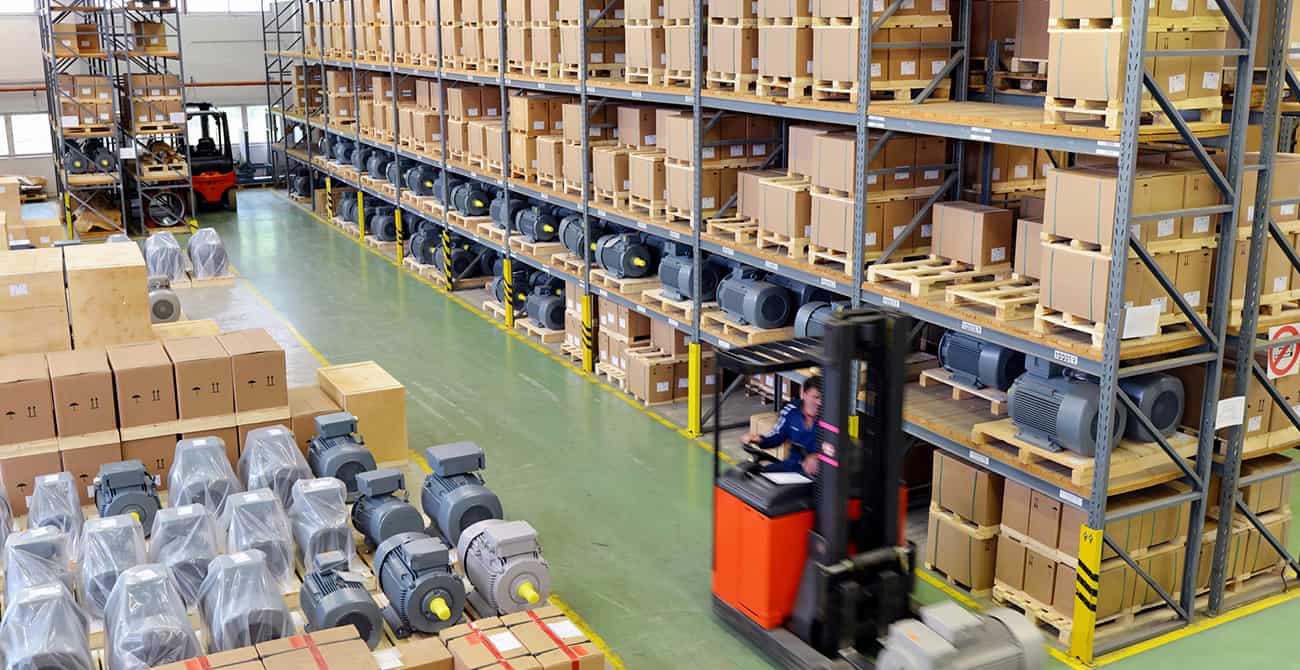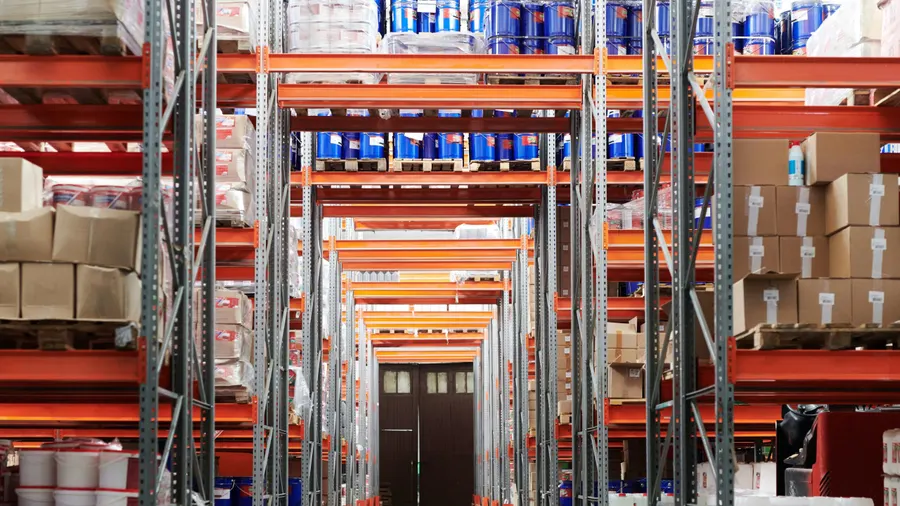For any business that sells physical products, inventory storage is the lifeblood of your operation. It’s the bridge between acquiring your products and getting them into the hands of your customers. But with a multitude of storage solutions available, choosing the right fit can feel overwhelming. Fear not! This comprehensive guide will equip you with the knowledge to navigate the world of inventory storage and select the perfect solution for your business needs in 2024.
The Inventory Storage Landscape
Inventory storage refers to the systems and facilities used to house, organize, and manage your stock. Different solutions cater to varying business sizes, product types, and operational requirements. Here’s a glimpse into some of the most common inventory storage options:
Warehousing:
For businesses with significant inventory volumes or bulk goods, warehouses offer expansive storage space and dedicated management teams. Ideal for businesses that require long-term storage solutions and have the budget to accommodate the upfront investment and ongoing operational costs.
Fulfillment Centers:
These facilities specialize in efficiently picking, packing, and shipping your orders directly to customers. Fulfillment centers excel at streamlining the order fulfillment process, ensuring fast shipping speeds and a seamless customer experience. This makes them a perfect fit for businesses that prioritize rapid order turnaround and want to minimize their own involvement in the fulfillment process.
Third-Party Logistics (3PL) Providers:
Offering a broader range of services beyond just storage, 3PL providers handle warehousing, fulfillment, and even transportation logistics. They provide a comprehensive outsourced solution, ideal for businesses with fluctuating inventory levels or those seeking a flexible and scalable approach. 3PL providers often operate on a pay-as-you-go model, making them an attractive option for businesses with variable inventory needs or those looking to control their storage costs.
Vendor-Managed Inventory (VMI):
In this strategy, your suppliers take responsibility for managing inventory levels at your designated storage location. This ensures you always have the stock you need without the burden of constant monitoring and avoids stockouts. VMI is a great option for businesses that rely on just-in-time inventory management or those who want to establish a closer partnership with their suppliers.
In-house Storage:
For smaller businesses with limited inventory or those requiring tight control over their stock, on-site storage might be a suitable option in the initial stages. This can be a cost-effective solution as you get started, but scalability can be a challenge. In-house storage becomes less practical as your business grows and your inventory needs increase.
Finding Your Perfect Inventory Storage Match
Choosing the ideal inventory storage solution requires careful consideration of several key factors:
Business Size and Needs:
The type of products you sell, your sales volume, and growth projections all influence your storage requirements. Businesses with large, bulky items will need a different storage solution than those with small, lightweight products. Similarly, a business with explosive sales growth will require a scalable storage solution to accommodate their expanding inventory.
Budgetary Constraints:
Inventory storage solutions come with varying costs. Warehouses typically require significant upfront investments in leasing or purchasing the facility, as well as ongoing costs for staffing, utilities, and maintenance. Fulfillment centers often have lower upfront costs but may charge per-pick, per-pack, and per-ship fees. 3PL providers can offer flexible pricing structures that scale with your business needs. In-house storage may seem like the most budget-friendly option initially, but hidden costs like rent, utilities, and staff for managing the storage space can add up quickly.
Geographic Location and Target Market:
Consider the proximity of your storage facility to your target market and how it impacts shipping times. If your customers are spread out geographically, you might need multiple storage locations or a fulfillment center with a strategically located distribution network to ensure fast and efficient delivery.
Fulfillment Requirements:
How important are fast shipping speeds and order accuracy to your business model? Fulfillment centers excel in these areas, with dedicated staff and optimized processes for picking, packing, and shipping orders. Warehouses may require additional investment in fulfillment infrastructure and staff if fast turnaround times are a priority. 3PL providers can offer varying levels of fulfillment services depending on your specific needs. In-house storage may be suitable if you have a small volume of orders and can manage fulfillment yourself, but it can become less efficient as your order volume grows.
Growth Projections:
Think ahead! Will your storage needs evolve as your business expands? Don’t get locked into a solution that can’t grow with you. Choose a solution that offers flexible storage capacities or the ability to easily scale up your storage space as your inventory requirements increase.
Making the Most of Your Inventory Storage
Once you’ve selected your storage solution, effective management practices are crucial for optimizing efficiency and minimizing costs. Here are some key strategies to consider:
Optimizing Warehouse Layout and Storage Methods:
- Warehouse Management Systems (WMS): Investing in a WMS can significantly enhance your inventory organization and management. These software solutions provide real-time inventory tracking, optimize storage allocation, and streamline picking and packing processes, leading to improved efficiency and reduced errors.
- Stock Identification: Implement a clear and consistent stock identification system using SKUs (Stock Keeping Units) or barcodes. This allows for quick and accurate identification of items, minimizing picking errors and expediting order fulfillment.
- Space-Saving Storage Solutions: Utilize vertical shelving, pallet racking, and other space-saving storage solutions to maximize your storage capacity. Consider product size, weight, and access frequency when designing your warehouse layout.
- FIFO (First-In, First-Out) Inventory Management: Implement a FIFO inventory management system to ensure older stock gets sold first. This helps prevent product expiration and minimizes the risk of obsolescence, especially for perishable items.
Inventory Control and Monitoring:
- Inventory Audits: Regularly conduct inventory audits to identify discrepancies between your physical stock and your inventory records. This helps prevent stockouts, minimize shrinkage (loss or damage of inventory), and maintain accurate accounting records.
- Inventory Forecasting: Utilize inventory forecasting tools to predict future demand based on historical sales data, seasonality trends, and marketing campaigns. This allows you to optimize stock levels, avoid overstocking or understocking, and ensure you have the right inventory on hand to meet customer needs.
- Security Measures: Implement robust security measures to protect your inventory from theft, damage, or loss. This may include security cameras, access control systems, and proper inventory handling protocols for your staff.
Additional Considerations Of Inventory Storage
- Scalability: As your business grows, your storage needs will likely evolve. Consider the scalability of your chosen storage solution. Can you easily add more storage space as your inventory levels increase?
- Integration with Existing Systems: Ensure your chosen storage solution integrates seamlessly with your existing inventory management software (if applicable) for efficient data transfer and streamlined operations.
- Sustainability: Explore eco-friendly warehousing options that prioritize energy efficiency, waste reduction, and sustainable materials handling. Consider factors like warehouse lighting solutions, recycling programs, and responsible packaging materials.
Conclusion
Choosing the right inventory storage solution is a critical decision for any business that sells physical products. By carefully considering your business needs, budget, and growth projections, you can select the ideal storage option to ensure efficient inventory management, optimize order fulfillment, and ultimately drive business success. Remember, ongoing optimization and management practices are essential for maximizing the effectiveness of your chosen storage solution.
Ready to take your inventory storage to the next level? At OnextDigital, we offer a range of services to help businesses with their inventory management needs, including: Web Development Service, Mobile App Development, UX/UI Design Service, White label software service, and CRM & Auto marketing implement service. Let OnextDigital be your partner in optimizing your inventory storage and fulfillment processes. Contact us today to discuss your specific needs and explore how our services can help your business thrive!







